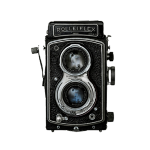Shutter Speed Calculator
Calculate optimal shutter speeds for different subjects and motion effects
Understanding Shutter Speed
Shutter speed is one of the most powerful creative controls in photography. It determines how motion is captured - whether frozen in crisp detail or blurred to convey dynamic movement.
This calculator helps you determine the optimal shutter speed based on:
- Camera type and focal length - for calculating minimum handheld shutter speeds
- Subject type - different subjects require different shutter speeds to capture effectively
- Desired motion effect - whether you want to freeze action, show natural movement, or create artistic blur
- Image stabilization - which can allow for slower handheld shutter speeds
Use this calculator as a starting point, then adjust based on your creative vision and shooting conditions.
Note: These recommendations are starting points. Actual optimal shutter speeds may vary based on:
- Your specific camera's performance
- Your personal steadiness when handholding
- The exact speed of your subject
- Lighting conditions
- Your creative intent
Shutter Speed Reference Guide
| Shutter Speed | Typical Use Cases |
|---|---|
| 30 sec - 1 sec | Night photography, light trails, star trails, light painting |
| 1 sec - 1/15 sec | Waterfall silky effect, intentional motion blur, night cityscapes |
| 1/15 sec - 1/60 sec | Panning shots, creative motion blur, low light photography |
| 1/60 sec - 1/125 sec | General photography, casual portraits, mild action |
| 1/125 sec - 1/250 sec | Moving subjects, street photography, active children |
| 1/250 sec - 1/500 sec | Fast action, sports, running subjects |
| 1/500 sec - 1/1000 sec | Fast sports, wildlife, splashing water |
| 1/1000 sec - 1/4000 sec | Very fast subjects, birds in flight, motorsports |
| 1/4000 sec - 1/8000 sec | Extremely fast subjects, freezing water droplets, bright conditions with wide apertures |
Advanced Shutter Speed Techniques
Panning
Follow a moving subject with your camera while using a relatively slow shutter speed (1/15 - 1/60s). This keeps your subject relatively sharp while blurring the background, creating a sense of speed and motion.
Rear Curtain Sync
When using flash with slower shutter speeds, set your camera to rear curtain sync. This fires the flash at the end of the exposure, creating more natural-looking motion trails.
Long Exposure Stacking
For extremely long exposures (minutes or hours), consider taking multiple shorter exposures and stacking them in post-processing. This reduces noise and prevents overexposure.
